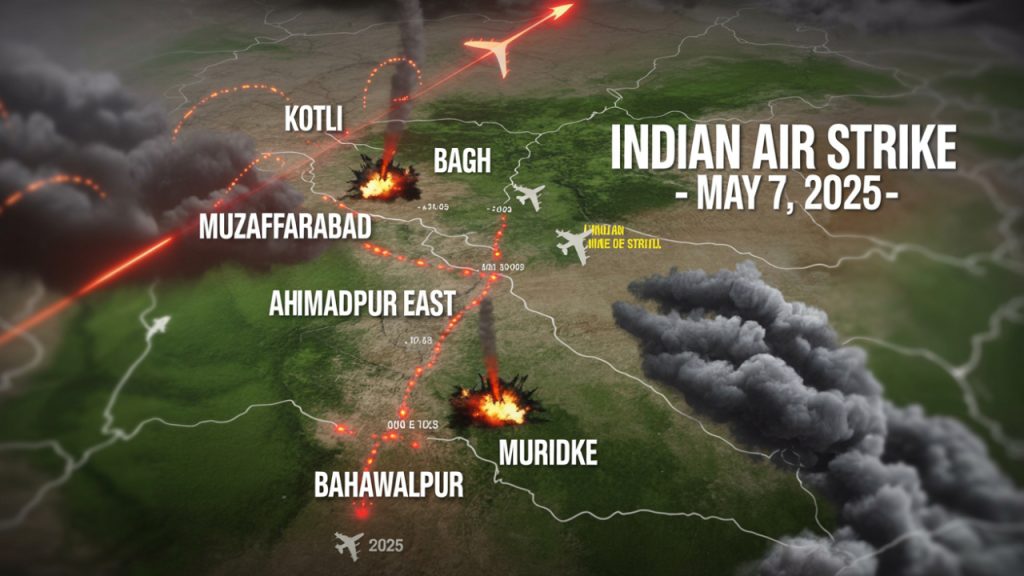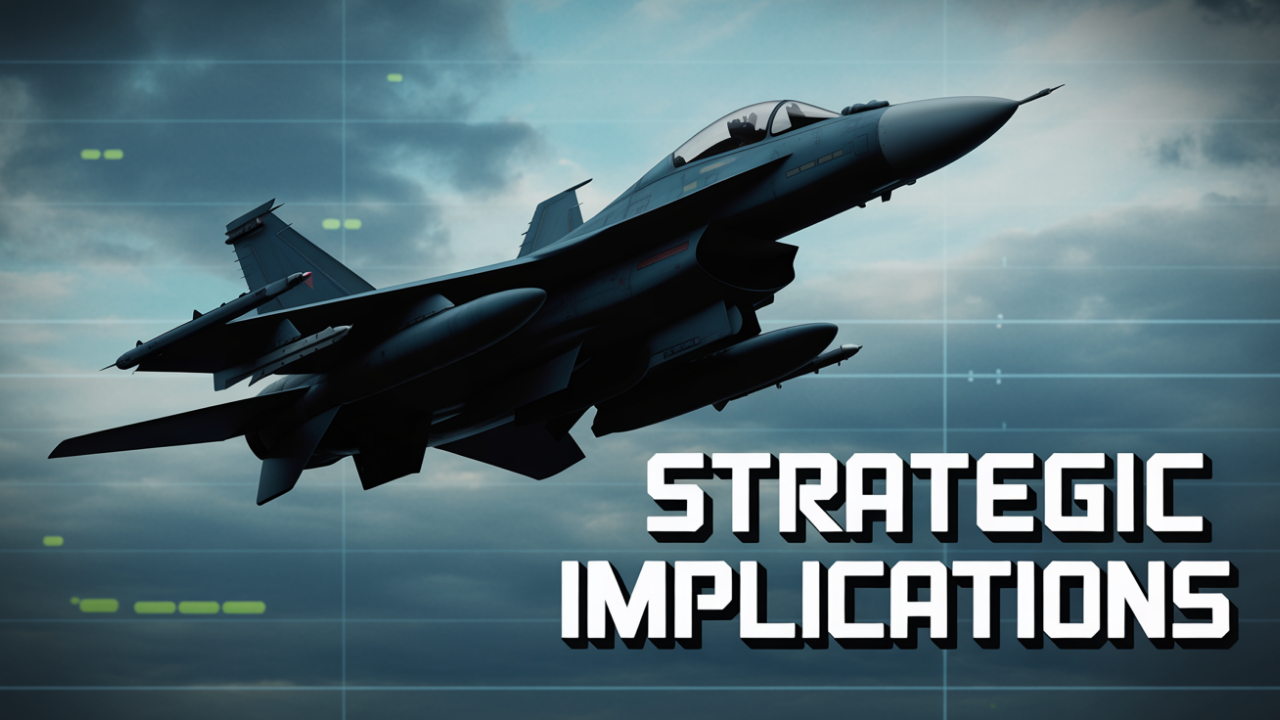The Operation Sindoor of India, which was launched on 7th May, 2025, marked a major escalation towards the counterterror operation strategy against the Pahalgam Terror Attack, which was done on 22nd April, 2025, and claimed the lives of 26 civilians. The operation Sindoor, which targeted nine terror infrastructure sites specifically in Pakistan and POJK (Pakistan Occupied Jammu & Kashmir), offers critical insights into modern warfare, geopolitical dynamics, and security policy.
For all the UPSC aspirants, understanding the event is important for mastering the topics, as in the defense strategy, international relations, and ethical governance. Below is the detailed analysis.
Context: The Pahalgam Terror Attack
- On the date of 22nd April 2025, five terrorists that were linked with TRF (The Resistance Front), a direct offshoot of LeT (Lashkar-e-Taiba), attacked a tourist site named Bisaran, in the area of Pahalgam in Jammu & Kashmir, killing 26 civilians (25 Hindu men and 1 Nepali).
- The attackers came out of the dense forests in the Bisaran area and used rifles such as M4 carbines and AK-47s, thus targeting tourists in a region of J&K that welcomed around 25 million tourists.
- Terrorists asked the civilians to recite Kalma and further asked them to pull down their pants if they were Muslims or not and shot these Hindu tourists from point-blank range.
- The attack, which was categorized as the deadliest attack since the 2008 Mumbai terrorist attacks, is aimed towards showing the world the level of Global Islamic Jihad and disruption of successful tourism efforts of J&K.
The Aftermath of the Pahalgam Terror Attack
- India took some fast, drastic measures and suspended the IWT (Indus Water Treaty) along with the closure of the Attari Border.
- Further, it suspended the visas of maximum Pakistani nationals in India for all purposes, whether medical, etc.
Operation Sindoor: Overview
Launch: The mission was launched on 7th May, 2025, at around 1:44 am IST. This was the time that all three wings of defense (Army, Navy, and Air Force) were deployed after the 1971 India-Pakistan War.
Objective: Targeting of 9 terror infrastructure sites in POJK and Pakistan for dismantling of terror networks for cross-border terrorism.
Leadership Role: Prime Minister of India Narendra Modi named this operation “Operation Sindoor” and granted the armed forces full operational freedom for selected targets, reflecting a calibrated responsibility.
Planning: Operation Sindoor was carried out with lots of deeper intel and aggressive and deeper planning strategies.
Execution Details
Operation Sindoor was carried out through these military assets:
Military Assets:
- Rafale Jets: Deployment of SCALP cruise missiles for deeper and precise strikes.
- Hammer Bombs: GPS-guided bombs for medium-range targets.
- Kamikaze Drones (Loitering Munitions): Monitoring and striking down real-time targets.
Targeted Sites :

| Location | Terror Group | Significance |
| Sarjal Camp, Sialkot | LeT | Trained terrorists involved in March 2025 J&K police killings |
| Mehmoona Joya Camp, Sialkot | LeT | Linked to planning the 2019 Pathankot air force base attack |
| Markaz Taiba, Muridke | LeT | Trained terrorists for the 2008 Mumbai attacks |
| Markaz Subhanallah, Bahawalpur | JeM | Recruitment and training headquarters for Jaish-e-Mohammed |
| Sawai Nala, Muzaffarabad | LeT | Linked to recent attacks in Sonmarg, Gulmarg, and Pahalgam |
| Syedna Bilal Camp, Muzaffarabad | JeM | Staging area for weapons and jungle survival training |
| Gulpur Camp, Kotli | LeT | Active in Rajouri and Poonch, linked to 2023–2024 attacks |
| Barnala Camp, Bhimber | LeT | Focused on weapons handling and explosives training |
| Abbas Camp, Kotli | LeT | Fidayeen training camp with capacity for 15 terrorists |
Casualties Till Now
Around 80 to 90 terrorists have been confirmed dead, with around 25 to 30 casualties in and around Murdike and Bahawalpur. No civilians or any type of military targets were harmed in this operation.
International Reactions and Controversy
- Indian Diplomacy: Briefed the different countries UAE, UK, USA, Saudi Arabia, and Russia, also emphasizing the operational non-escalatory measures. The NSA of India, Ajit Doval, updated the USA counterpoints after the strike.
- Pakistan’s Response: The Pakistani Prime Minister Shehbaz Sharif has claimed this operation is an “act of war,” while the Pakistani Army started shelling along the LoC (Line of Control) in the Rajouri and Poonch sectors, thus signaling a potential escalation.
- Global Perception: While India has highly committed to zero tolerance for terrorism, the Pakistani aggression can exaggerate the regional tensions.
Strategic Implications
- Deterrence Message: This demonstrates the ability of India to plan and conduct precise strikes, wading through the Pakistani Air Defense and into Pakistani territory, thus reinforcing counter-terror operations.
- Historical Context: This is the first military action after the 1971 India-Pakistan war, showing the balance between military strength and diplomatic strength.
- UPSC Relevance: A case study towards the military policy, national security policy, and geopolitical strategy.
Key Takeaways for UPSC Aspirants
- Thematic Analysis: Operation Sindoor illustrates the integration of operations that should be intelligence-based along with precise warfare.
- Ethical Considerations: Balancing of collateral damage and minimization of it with taking in the strategic objectives in countering the terror operations, a topic that’s relevant for ethics and governance in the UPSC syllabus.
- Survey Methodology: The operation of planning and execution thus reflects the principles for the data-driven strategies along with the risk mitigation for understanding survey-based marketing.
Conclusion
Operation Sindoor shows the advanced prowess of the Indian military and a shift towards technologically advanced and precision-based counter-terrorism. For all the UPSC aspirants, it directly highlights the importance of interdisciplinary knowledge for integrating military, national security, ethical dimensions, and political systems. As these tensions evolve, understanding that such operations remains important for right decision-making along with strategic analysis.





